Martin McGrath Studio is a design practice based in London, focused on exhibition design and the creative direction of physical and digital environments. Working mostly with museums, galleries and cultural institutions, the practice is committed to developing creative, thoroughly researched and effective design solutions that prioritise content narratives and place the audience’s needs at the centre of the design process. We believe that good work is made by developing respectful relationships with clients and collaborators, supporting honest, productive and critical dialogue.
We are interested in projects of all scales and often collaborate with specialist practitioners, such as illustrators, creative technologists, writers and programmers to expand and meet project requirements.
We are interested in projects of all scales and often collaborate with specialist practitioners, such as illustrators, creative technologists, writers and programmers to expand and meet project requirements.
Contact
Unit 207, Bradbury Works
Gillett Sq, Bradbury Street,
London, N16 8JN
mail: studio@martinmcgrath.com
instagram: @martimcgrath
Unit 207, Bradbury Works
Gillett Sq, Bradbury Street,
London, N16 8JN
mail: studio@martinmcgrath.com
instagram: @martimcgrath

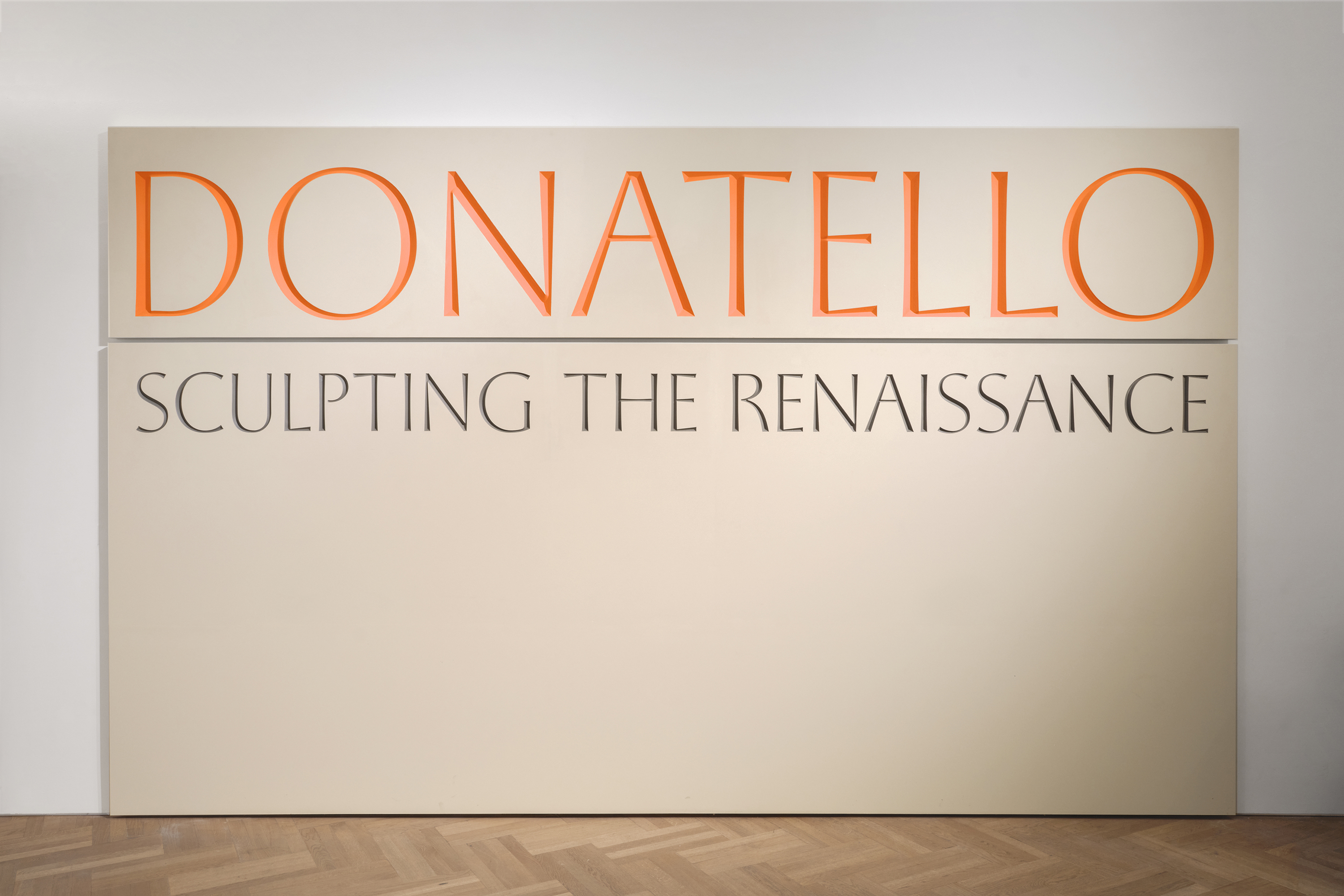
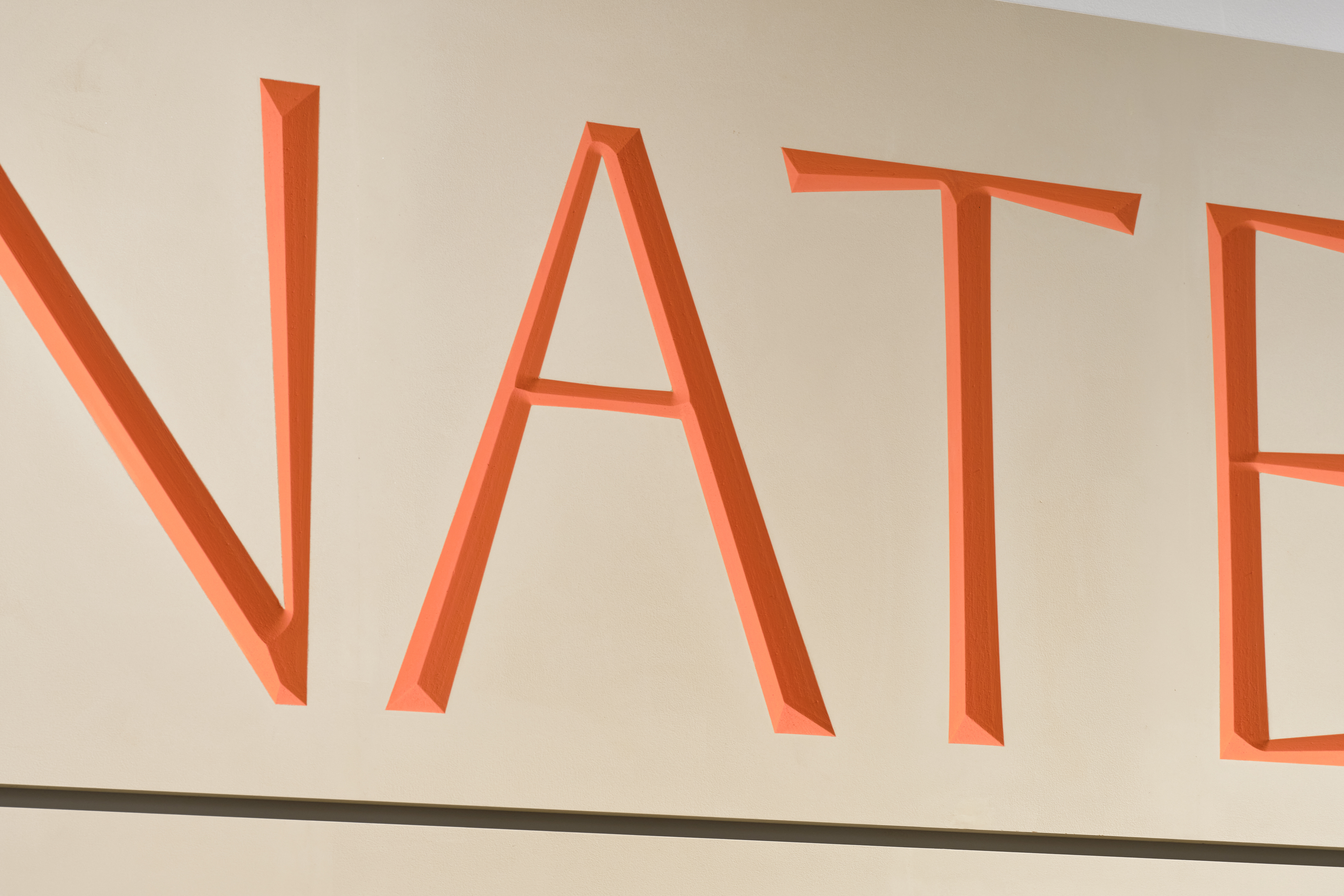
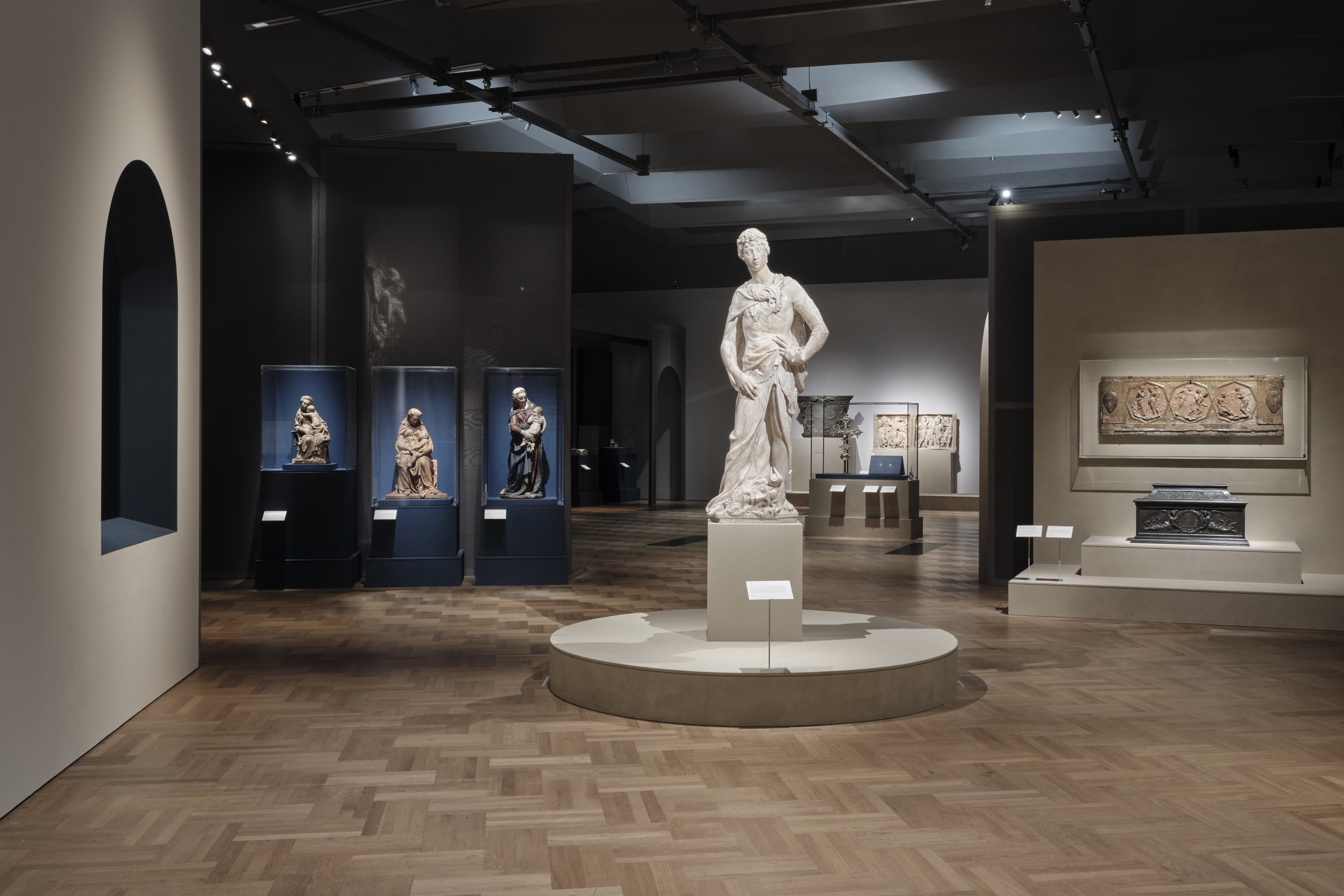

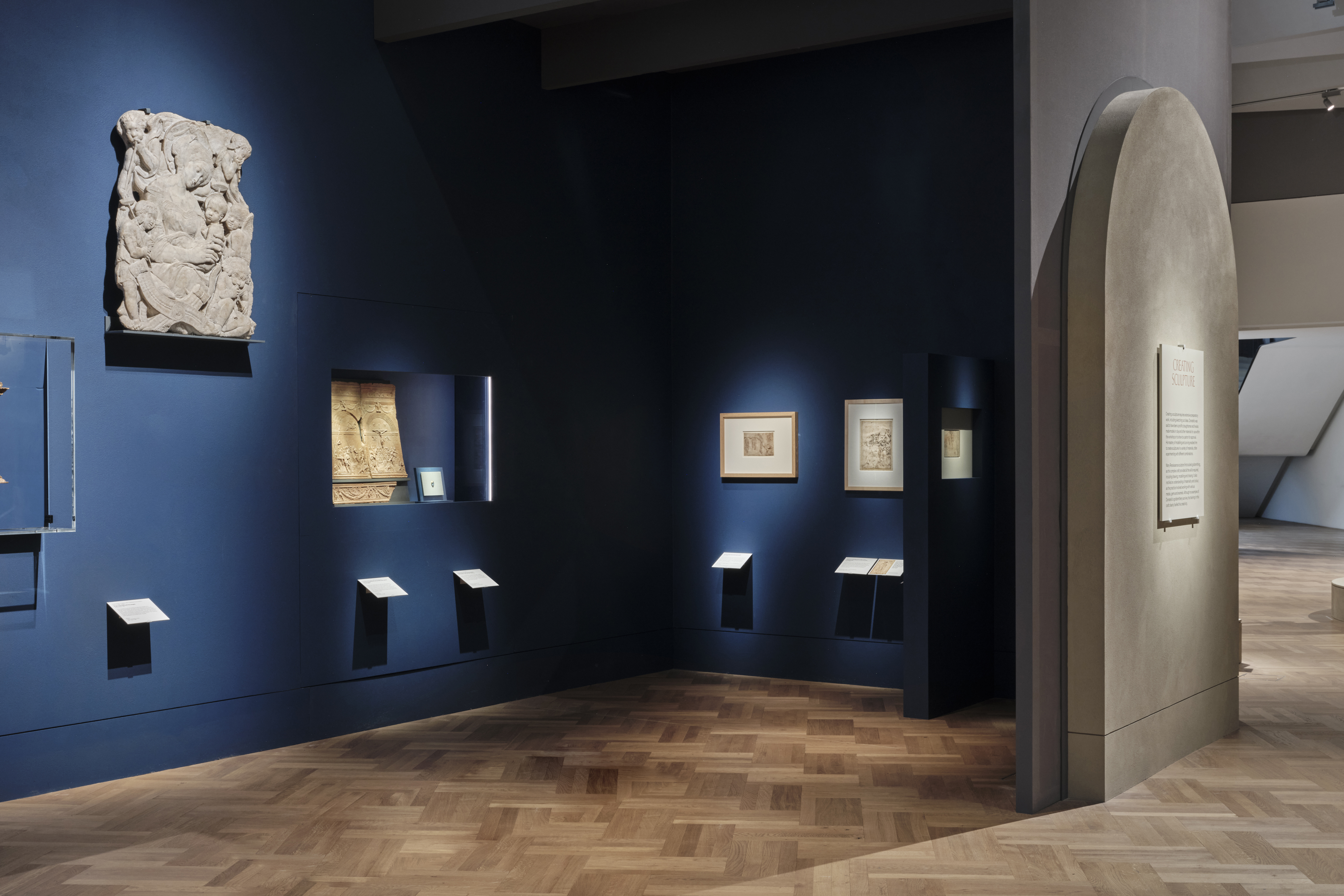
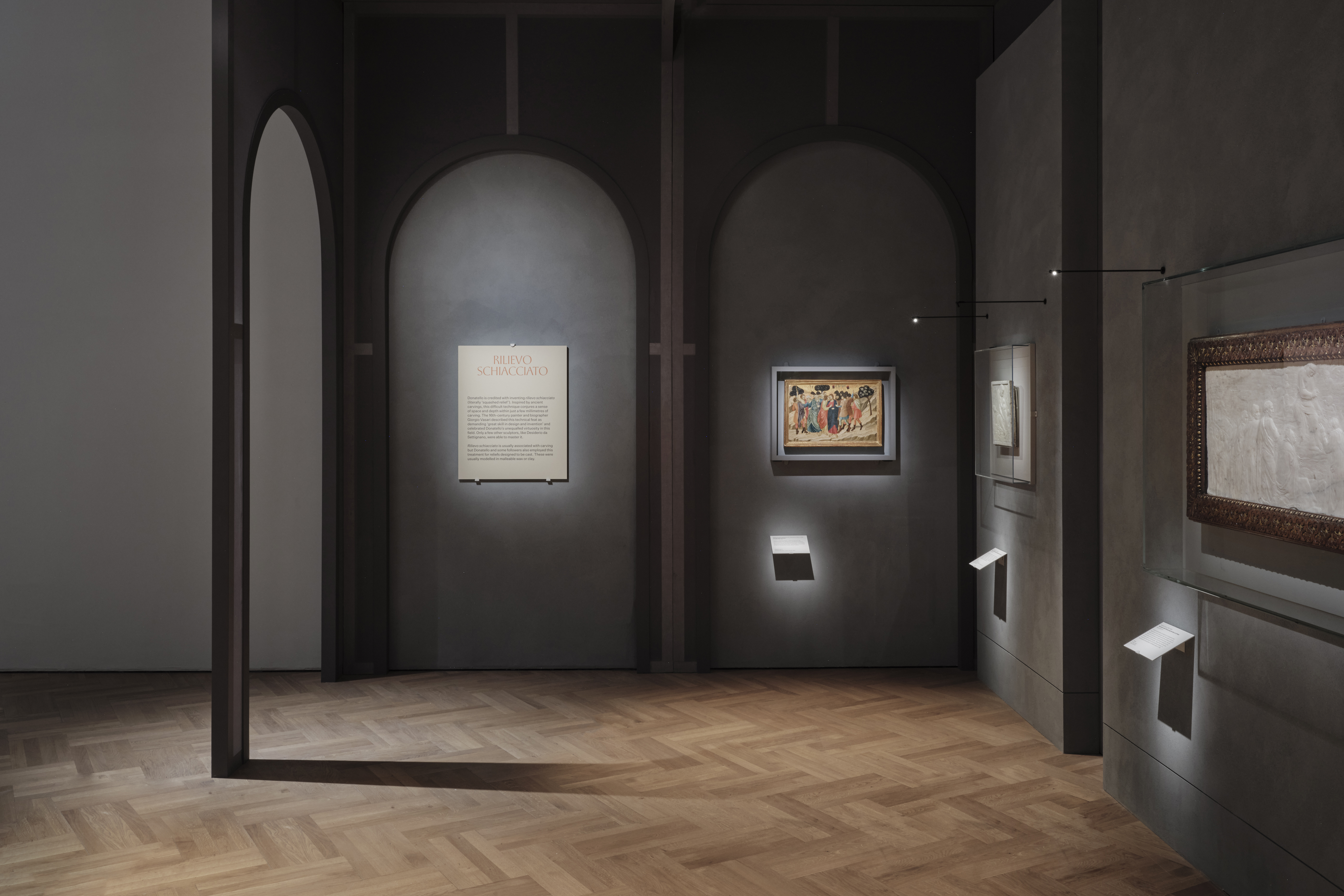
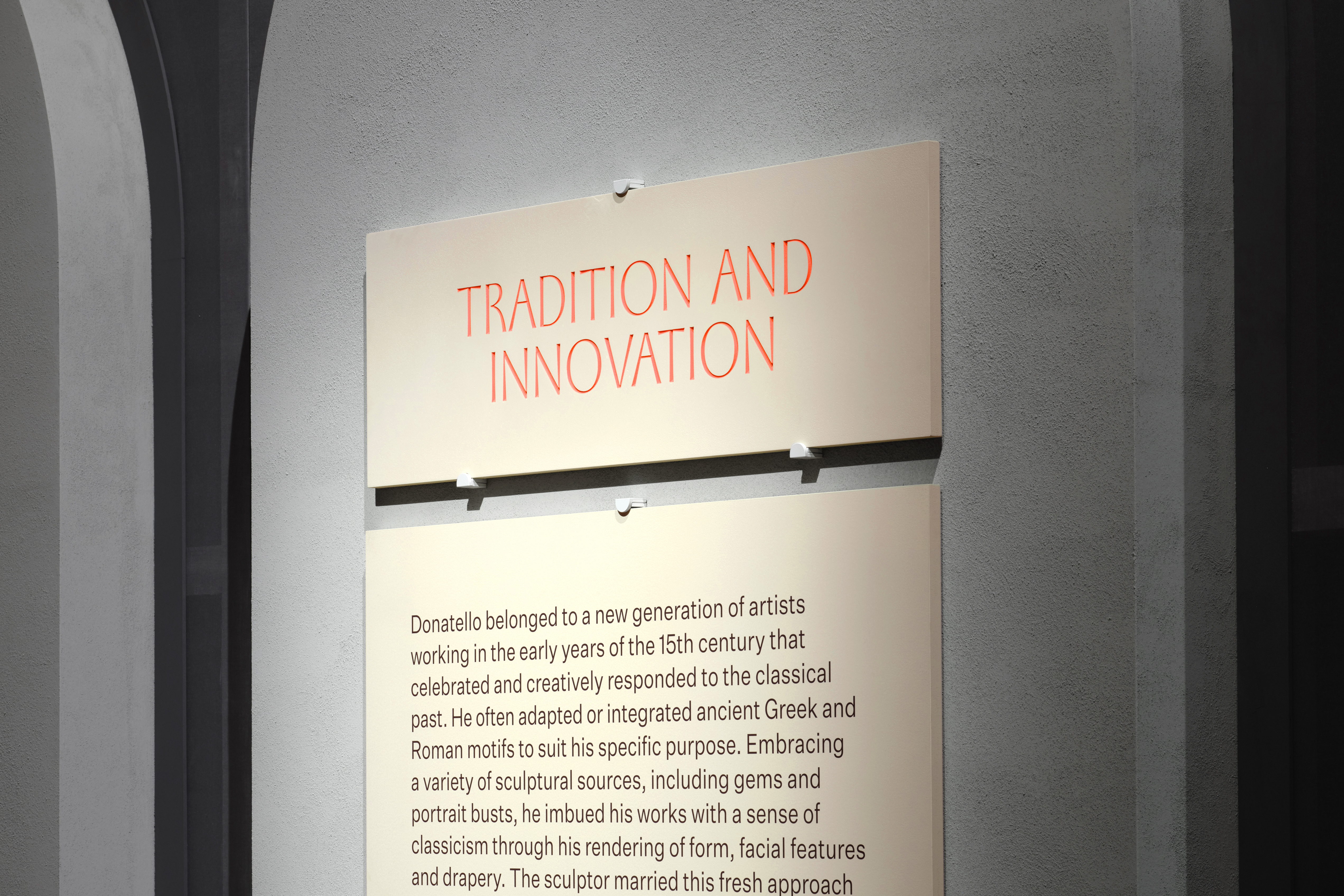

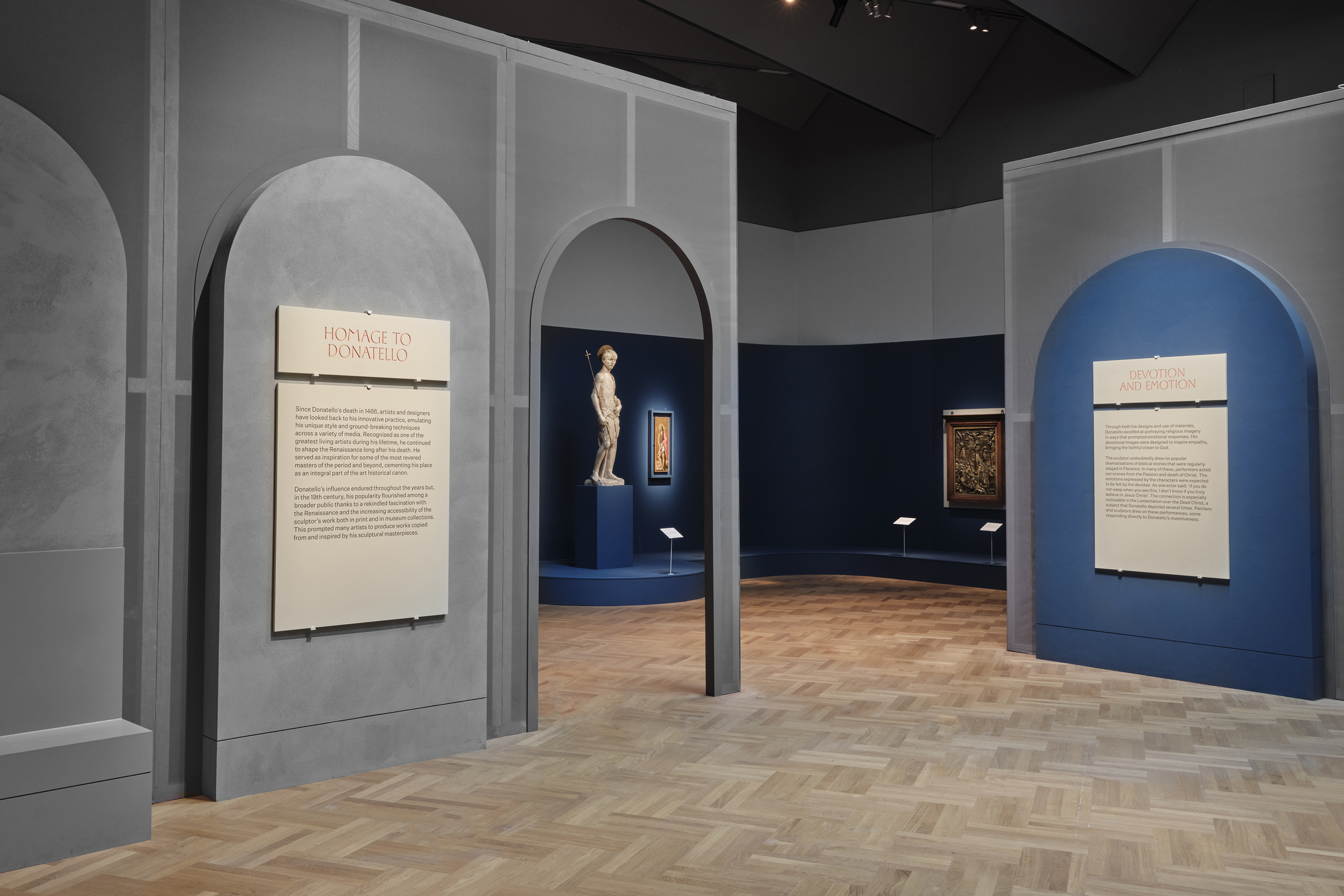
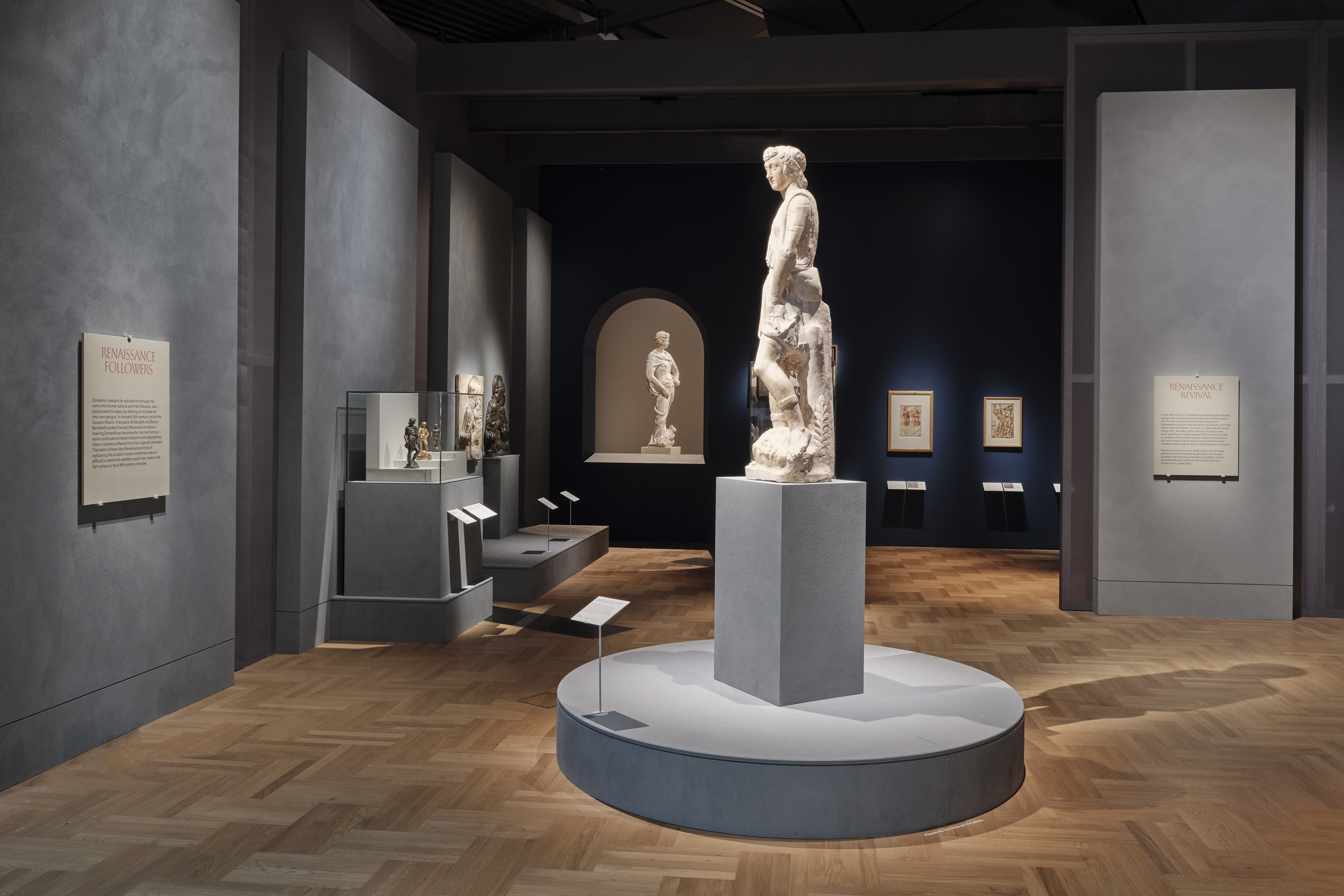

Donatello: Sculpting the Renaissance
V&A, 2023
V&A, 2023
The first major UK exhibition to explore the exceptional talents of the Renaissance artist Donatello. One of the most inventive and influential artists of the Renaissance, Donatello was at the heart of the revolution in art and culture taking place in 15th-century Italy. Donatello combined the growing interest in ancient Greece and Rome with the familiar traditions of his time. The exhibition explored Donatello’s creativity and unique vision, his workshop practices and collaborations, and his enduring impact on artists across the centuries.
The exhibition design takes its cues from Florence, the cradle of the Renaissance, and presents the exhibition’s narrative and through a series of semi-translucent architectural structures and piazza-style open spaces. The exhibition title lettering has been v-carved and infill painted, using a typeface designed by Paul Shaw after his extensive research on the ‘Florentine Sans Serif’.
Curated by Peta Motture, Whitney Kerr-Lewis and Sabrina Villani (V&A). 3D design by Sam Brown, and Kane Carroll (V&A), lighting design by Studio ZNA, photography by Thomas Adank.
The exhibition design takes its cues from Florence, the cradle of the Renaissance, and presents the exhibition’s narrative and through a series of semi-translucent architectural structures and piazza-style open spaces. The exhibition title lettering has been v-carved and infill painted, using a typeface designed by Paul Shaw after his extensive research on the ‘Florentine Sans Serif’.
Curated by Peta Motture, Whitney Kerr-Lewis and Sabrina Villani (V&A). 3D design by Sam Brown, and Kane Carroll (V&A), lighting design by Studio ZNA, photography by Thomas Adank.

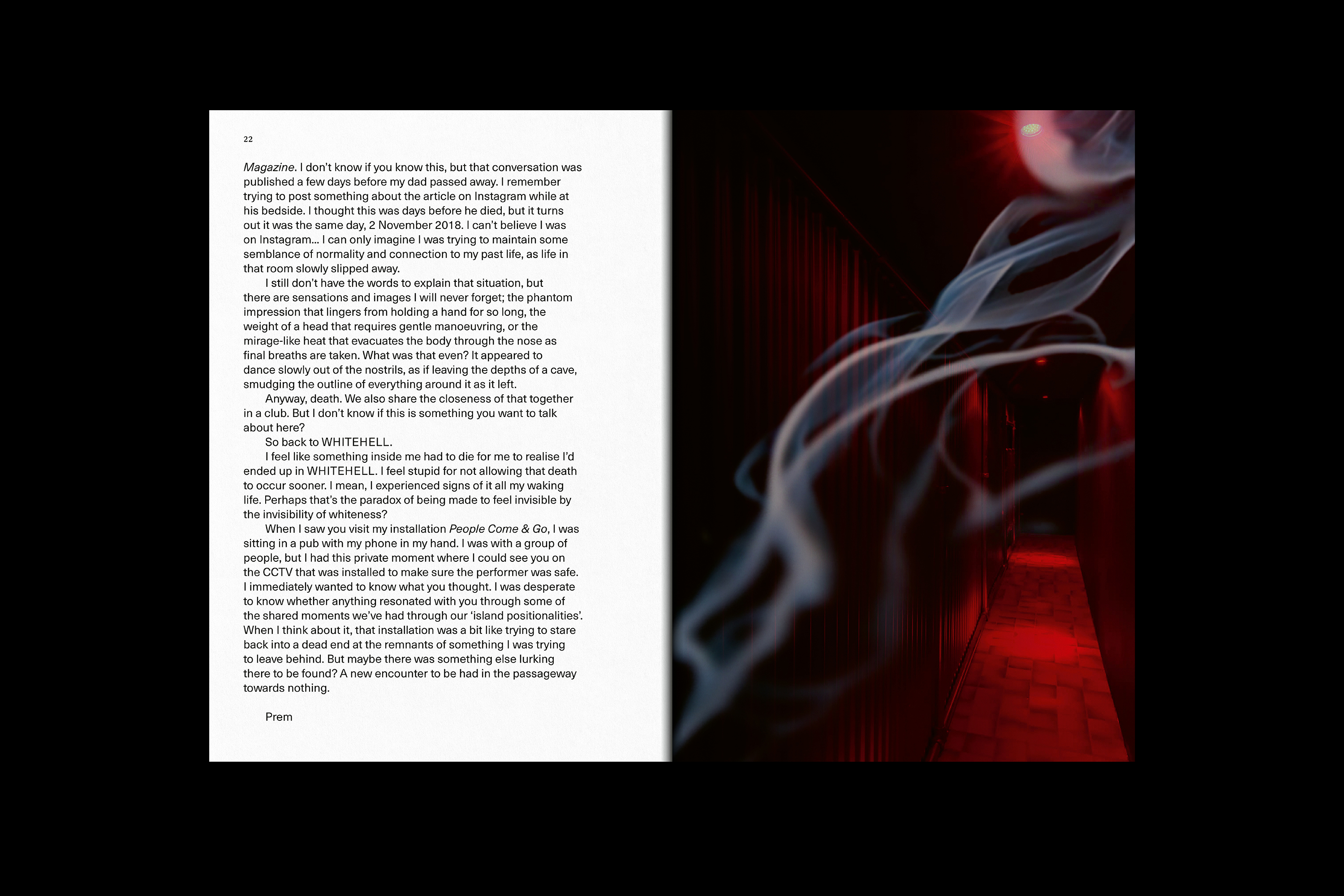
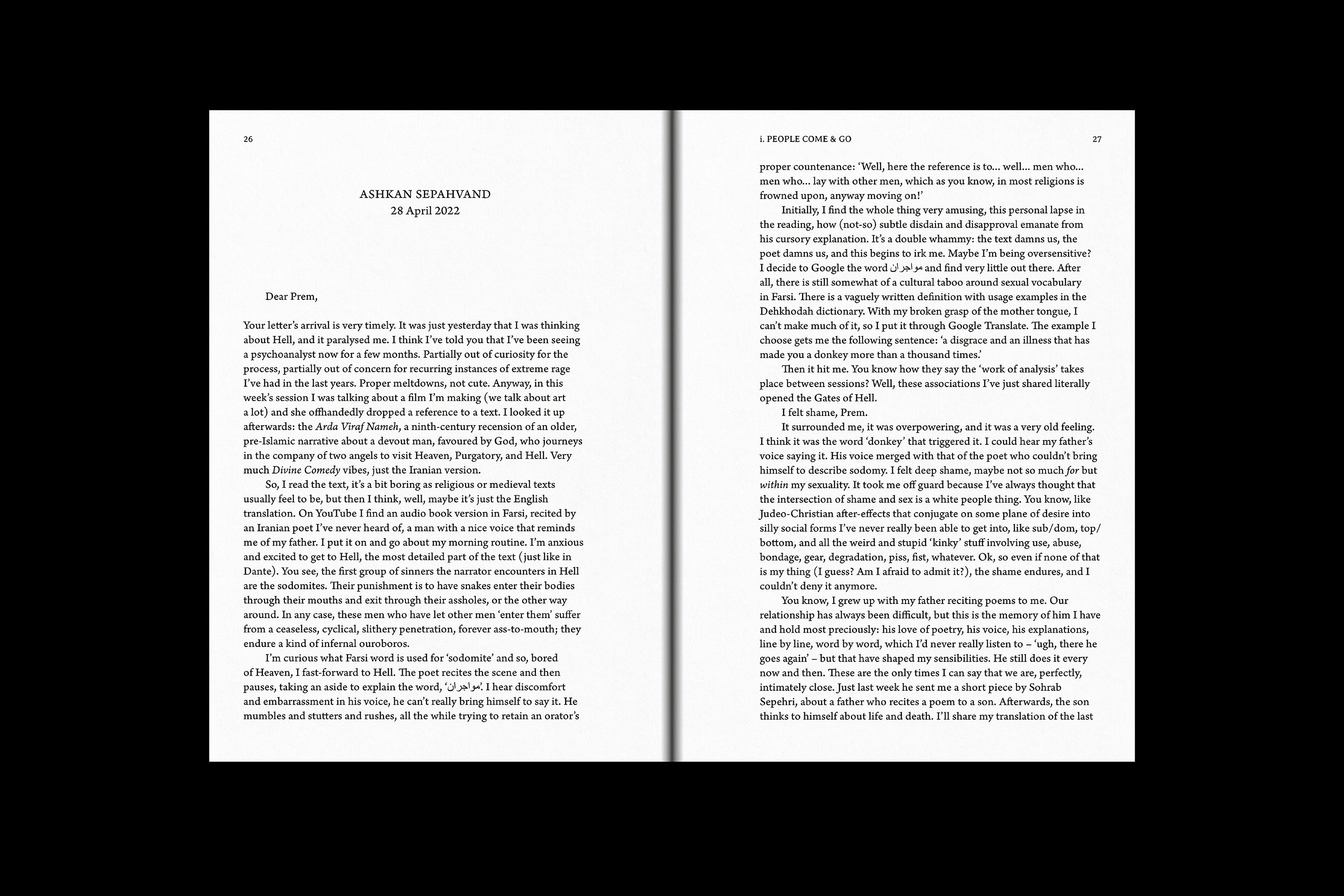
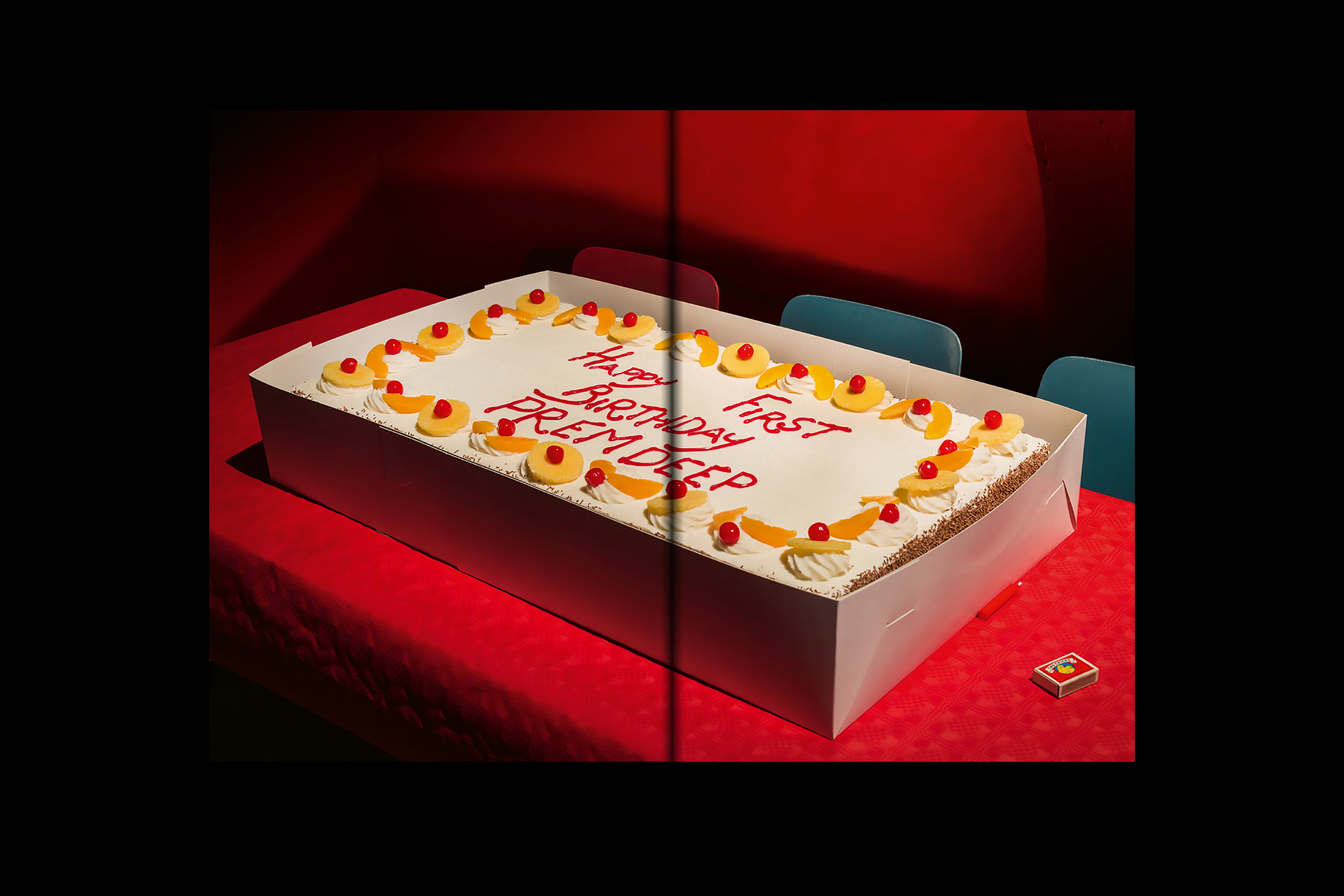
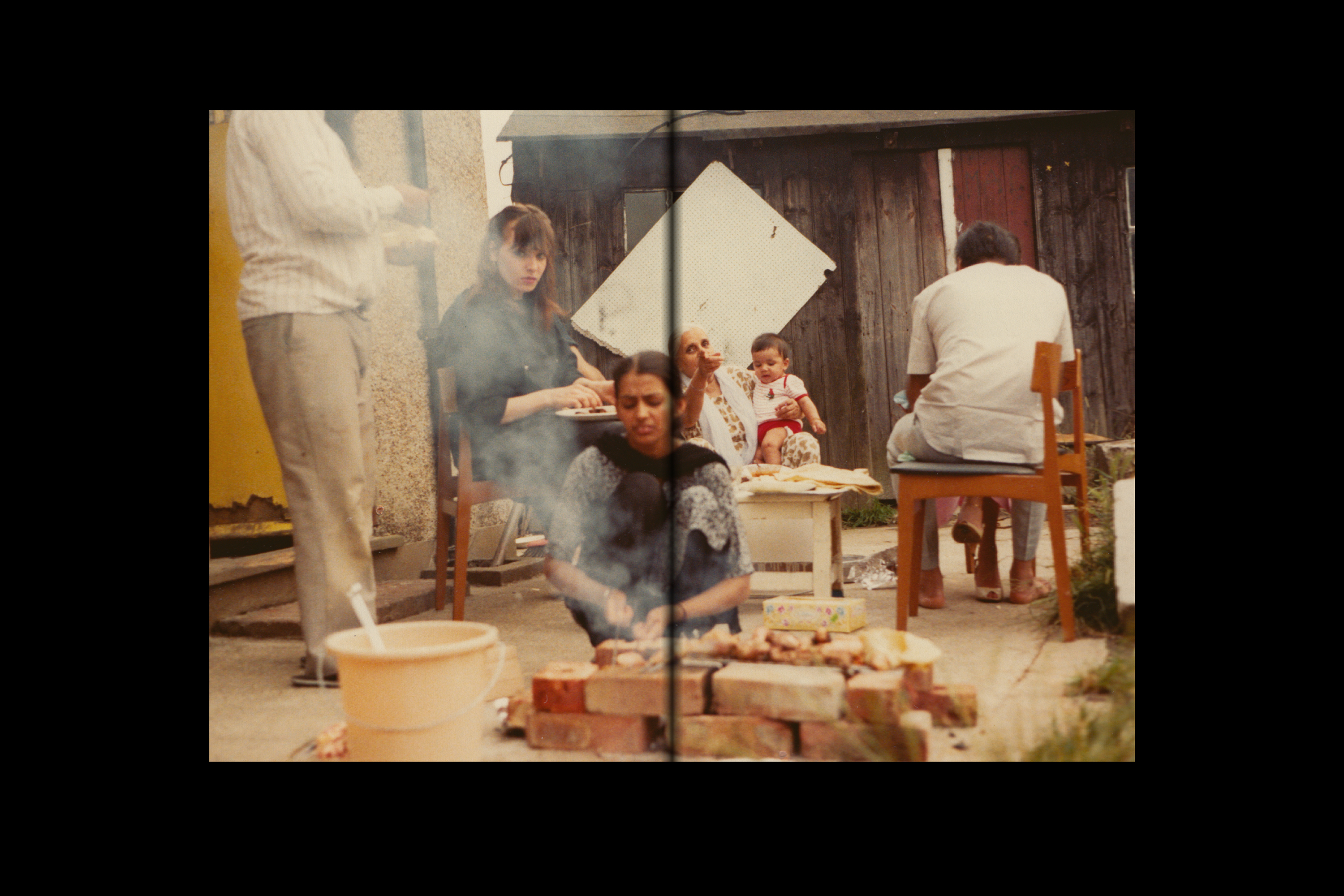



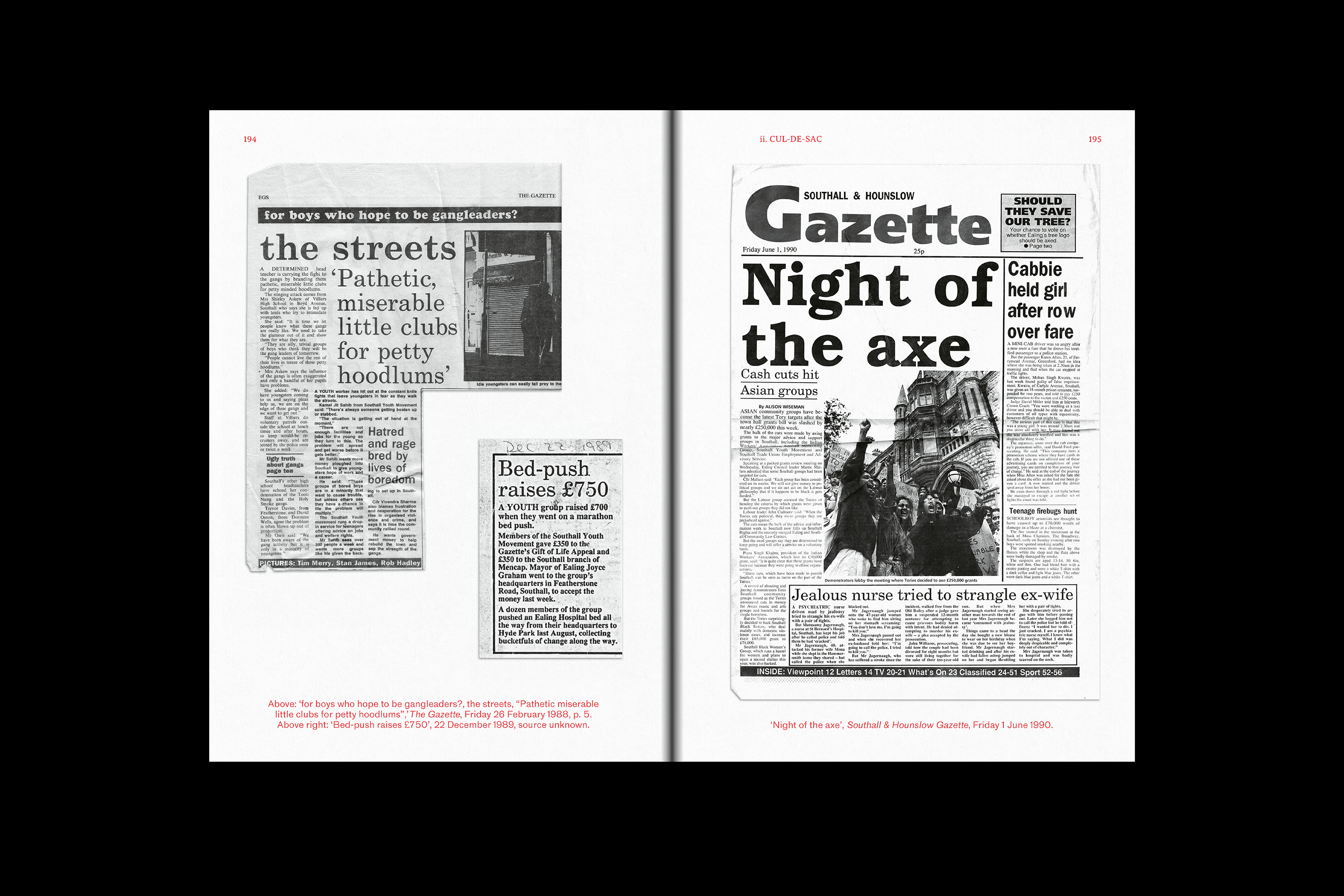

That Fire Over There
Prem Sahib
Published by Book Works
170mm ︎ 240mm
Prem Sahib
Published by Book Works
170mm ︎ 240mm
That Fire Over There takes fire as a metaphor for ideas around queer attachment, proximity, and personal and collective transformation. It also excavates the history of a real fire which in 1981 destroyed the Hambrough Tavern – a contested site symbolic of provocation and conflict against far-right groups in Southall, west London, where Prem Sahib grew up.
A rich body of images — documenting artworks which explore gay cruising, selected from family photo collections, and displaying ephemera from the archive of Prem Sahib’s uncle Kamaljit Sahib, a notable activist in Southall of the 1980s and 90s — combines with extracts from a dream diary and exchanges with family members. Added to this are newly commissioned texts and correspondence by Sita Balani, Milovan Farronato, Reba Maybury and Ashkan Sepahvand, engaging with emotional themes such as grief, shame and loss. Prem Sahib’s own writing makes connections between interlocutors and carves out a space for otherwise disparate material to coexist, all in the pursuit of questioning ideas around freedom, sexuality, and intergenerational experiences of place and politics.
A rich body of images — documenting artworks which explore gay cruising, selected from family photo collections, and displaying ephemera from the archive of Prem Sahib’s uncle Kamaljit Sahib, a notable activist in Southall of the 1980s and 90s — combines with extracts from a dream diary and exchanges with family members. Added to this are newly commissioned texts and correspondence by Sita Balani, Milovan Farronato, Reba Maybury and Ashkan Sepahvand, engaging with emotional themes such as grief, shame and loss. Prem Sahib’s own writing makes connections between interlocutors and carves out a space for otherwise disparate material to coexist, all in the pursuit of questioning ideas around freedom, sexuality, and intergenerational experiences of place and politics.
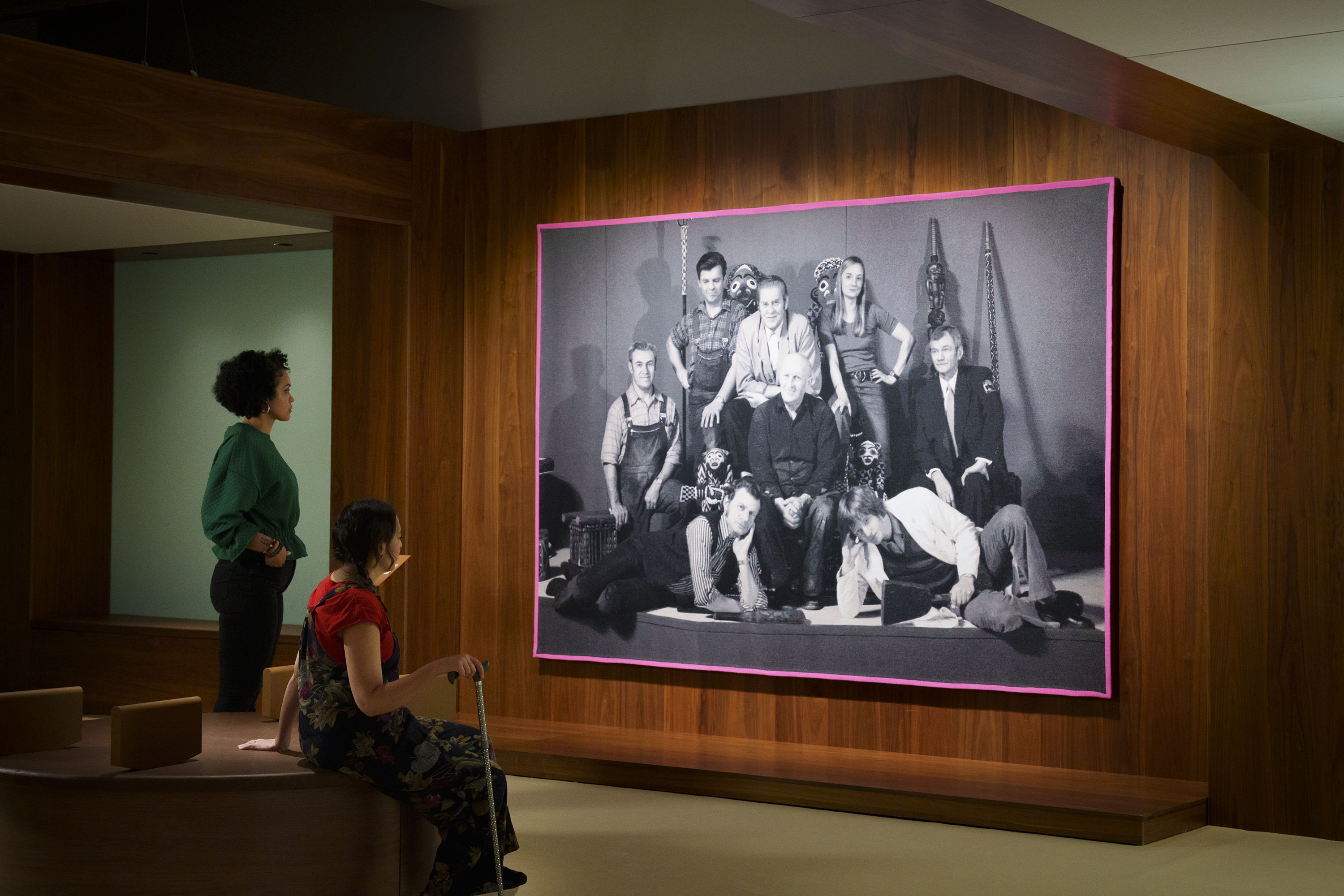
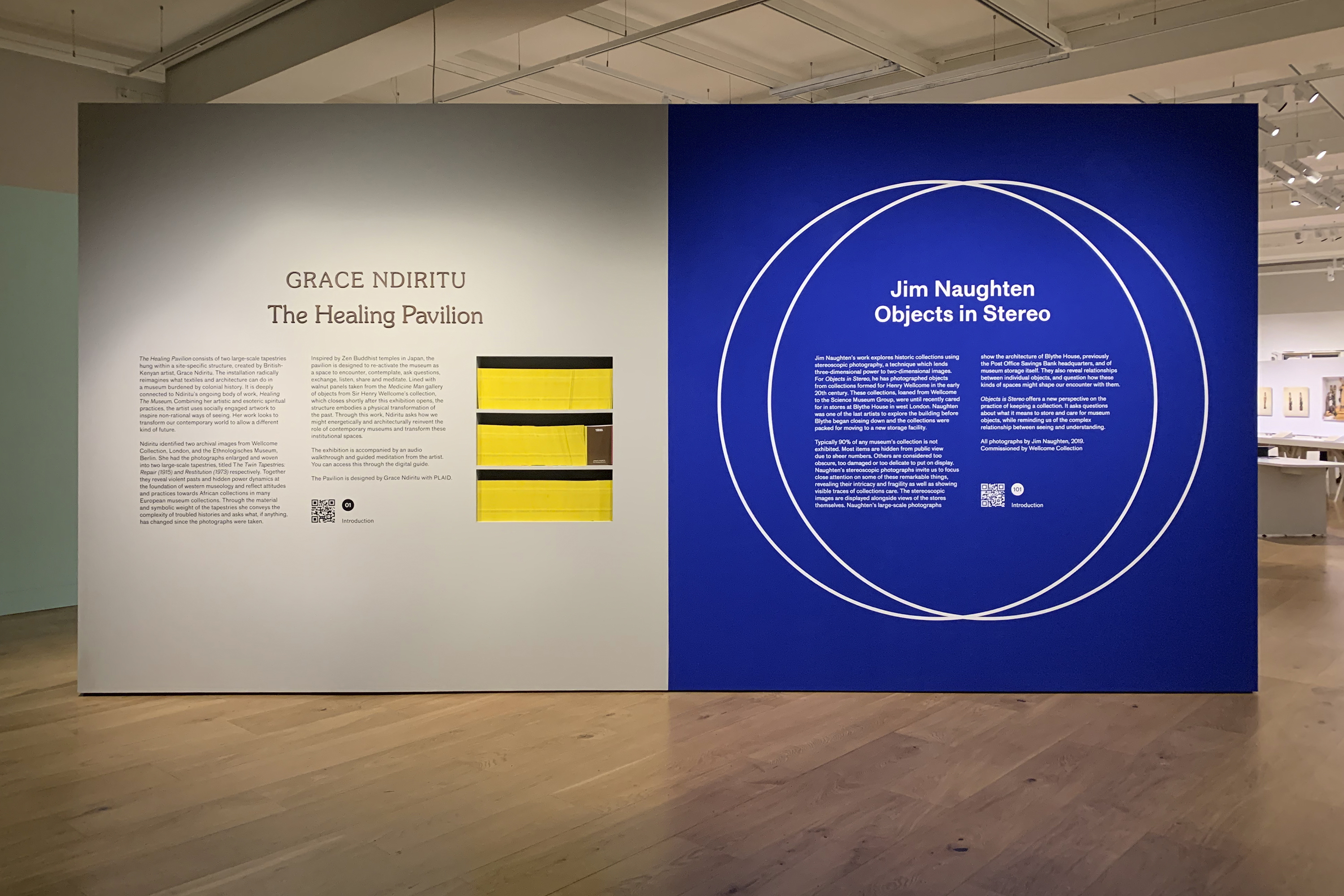

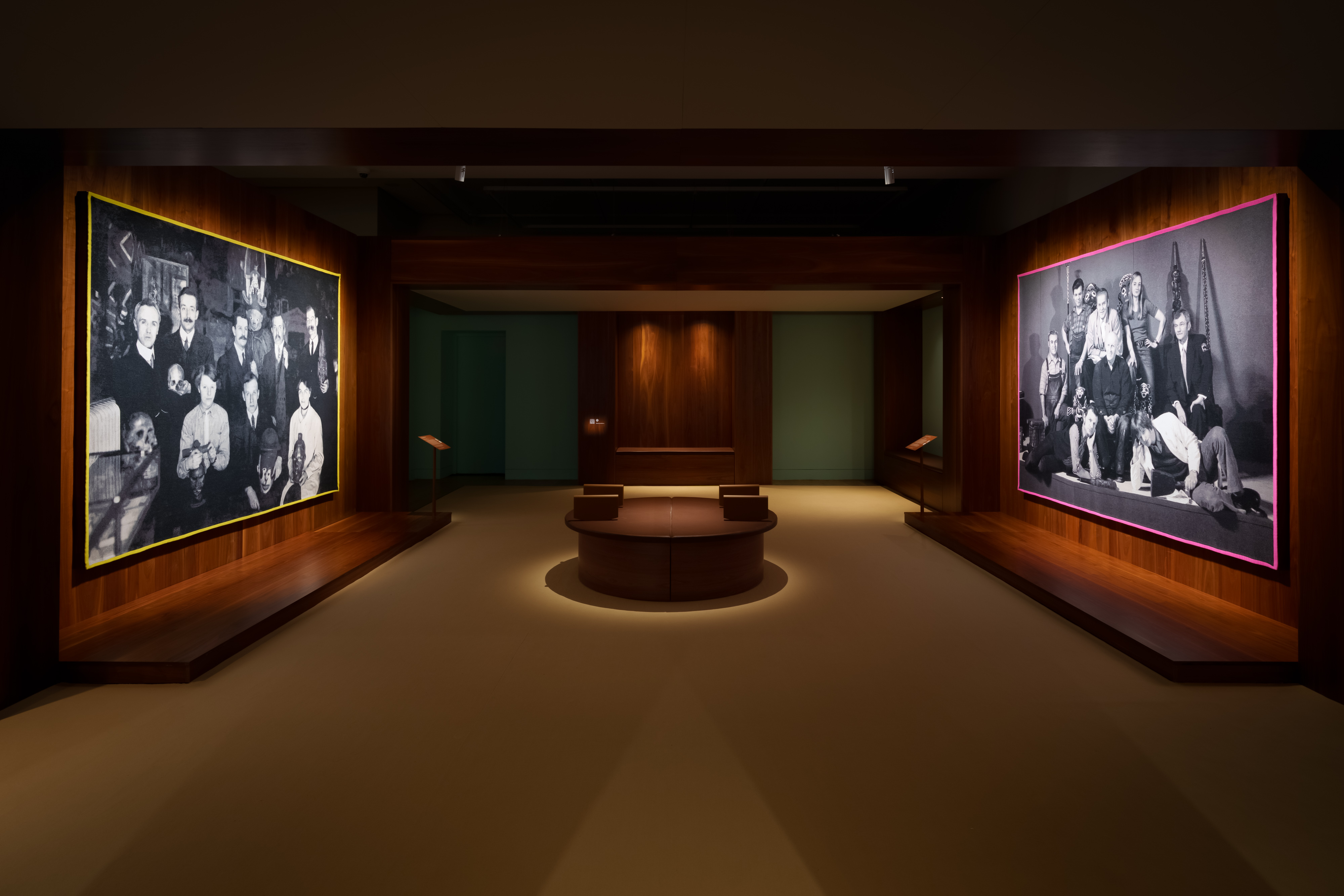
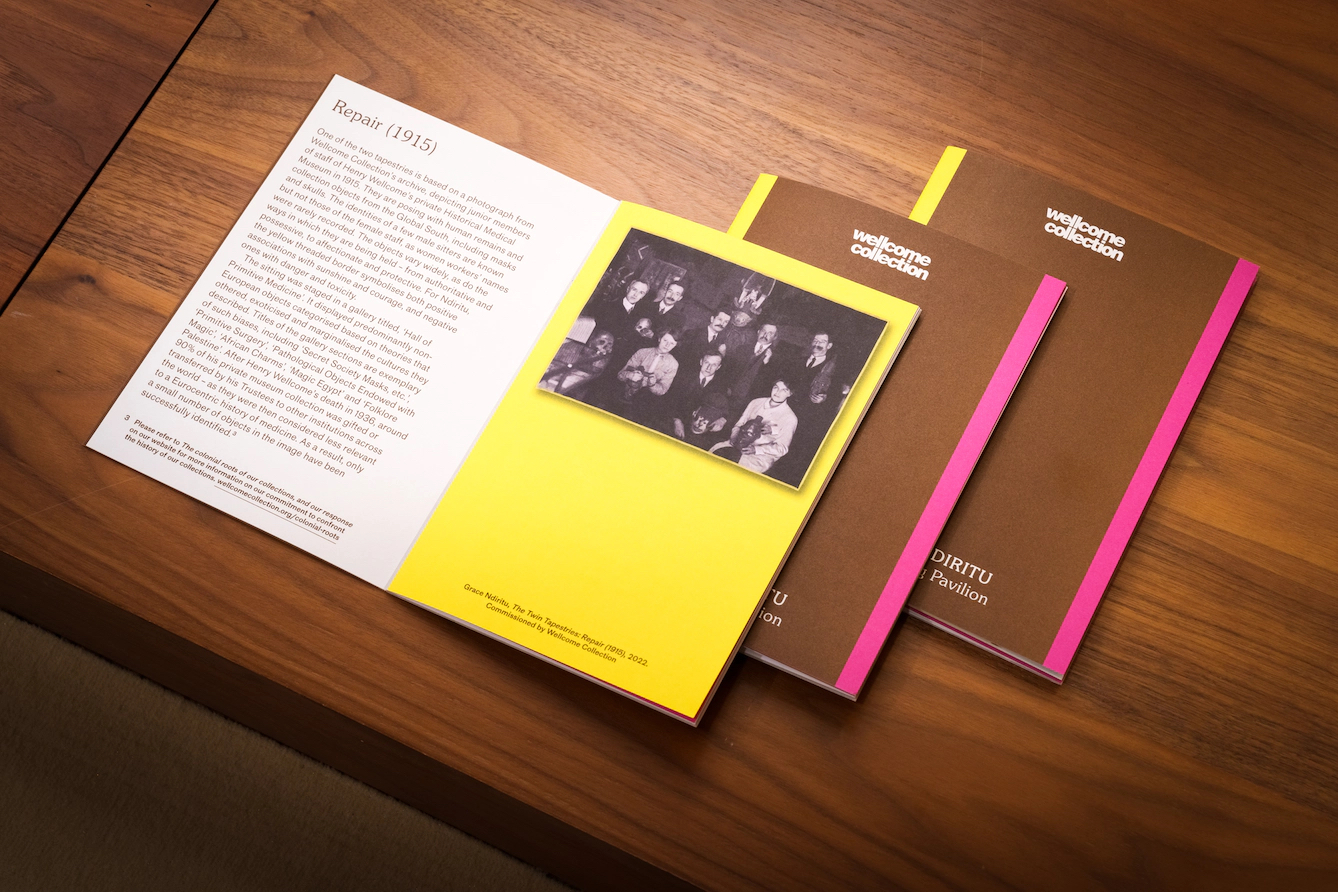
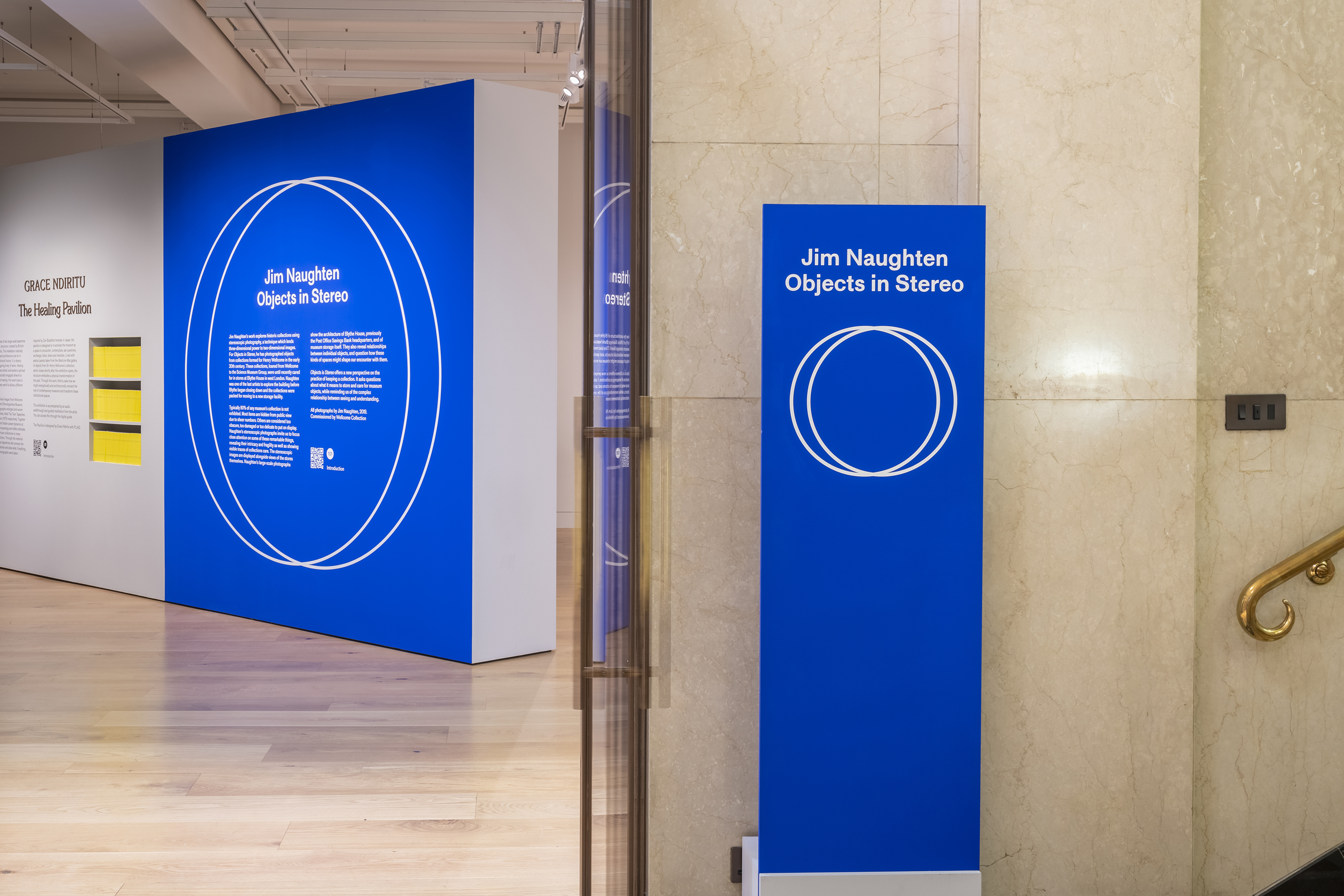
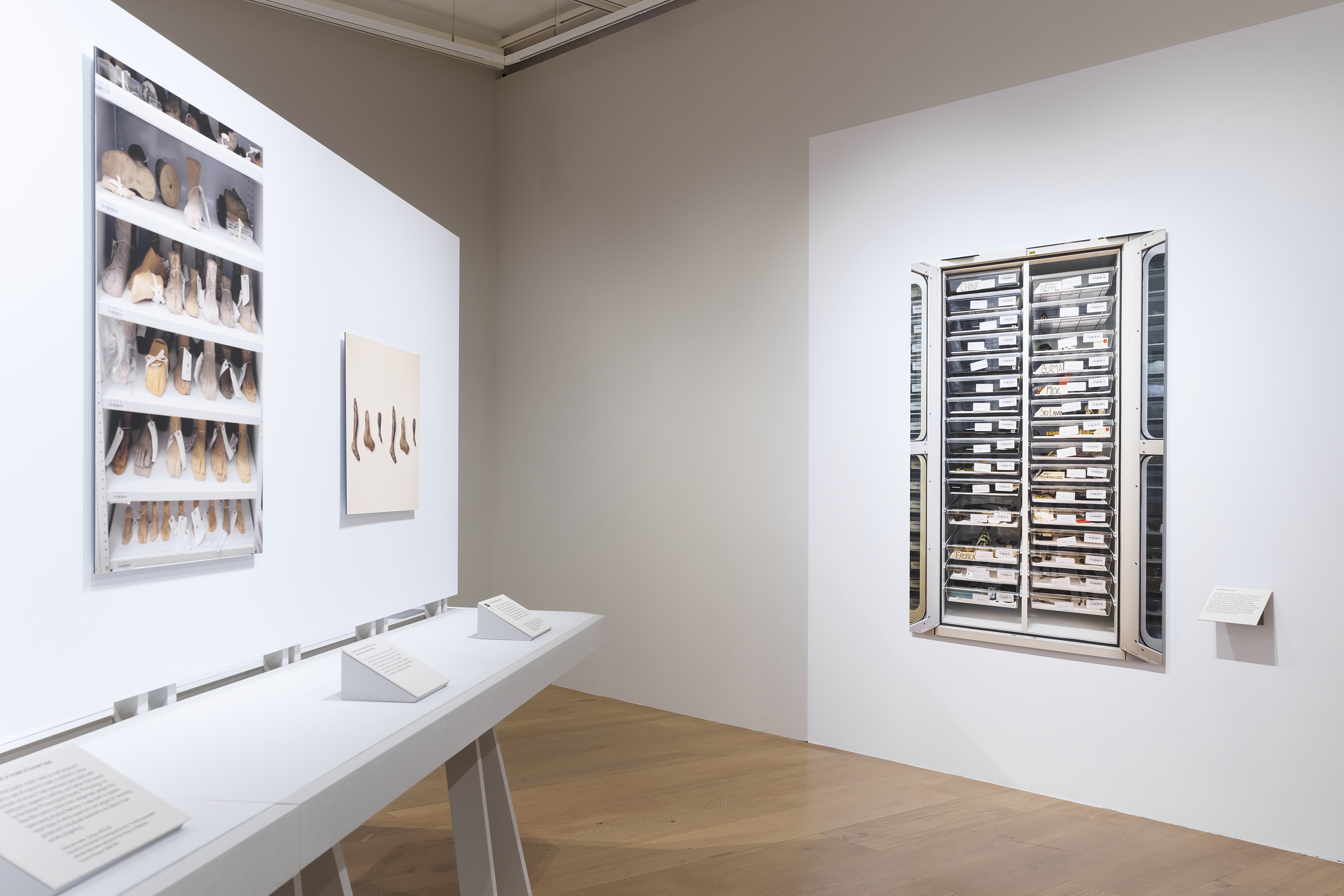
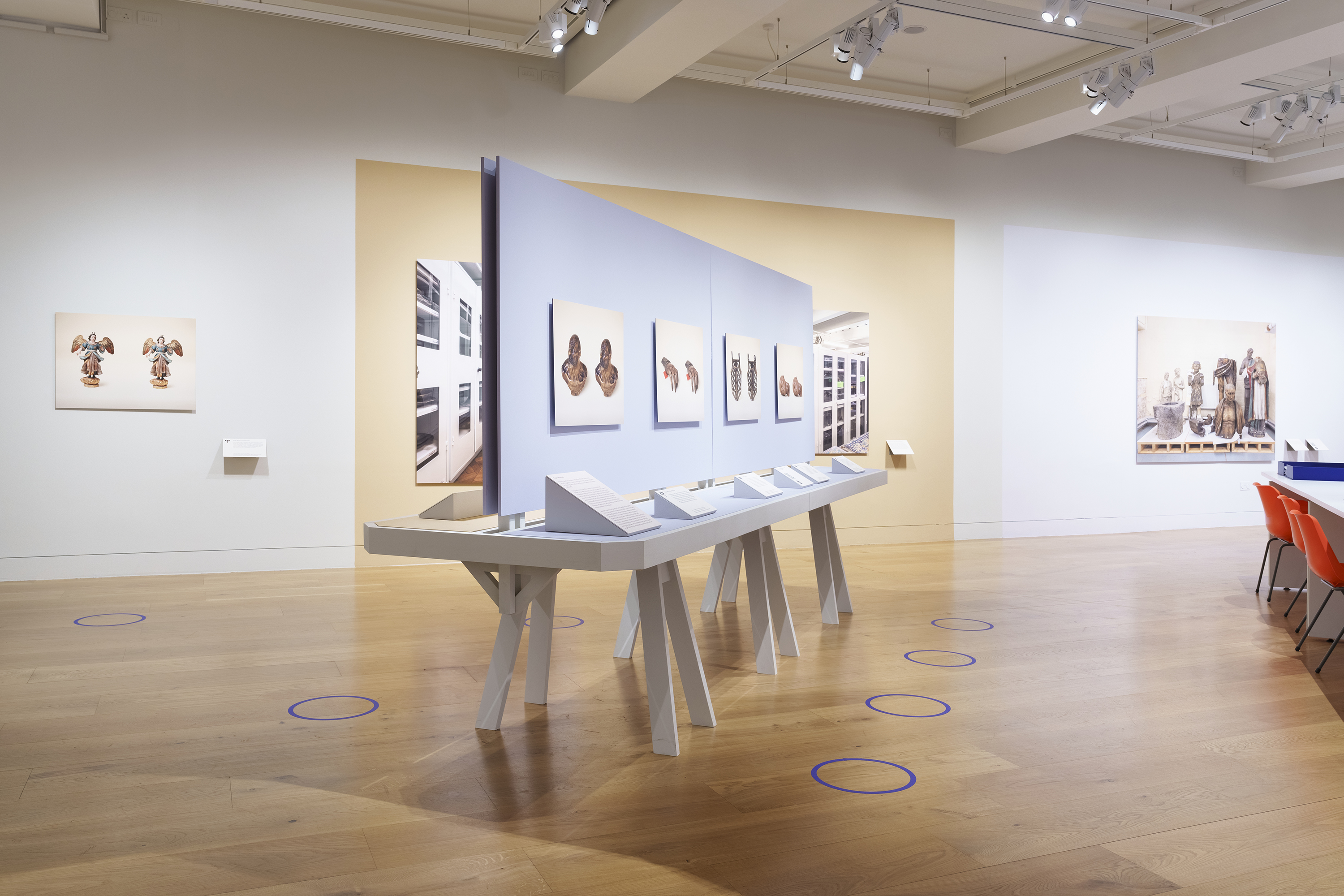
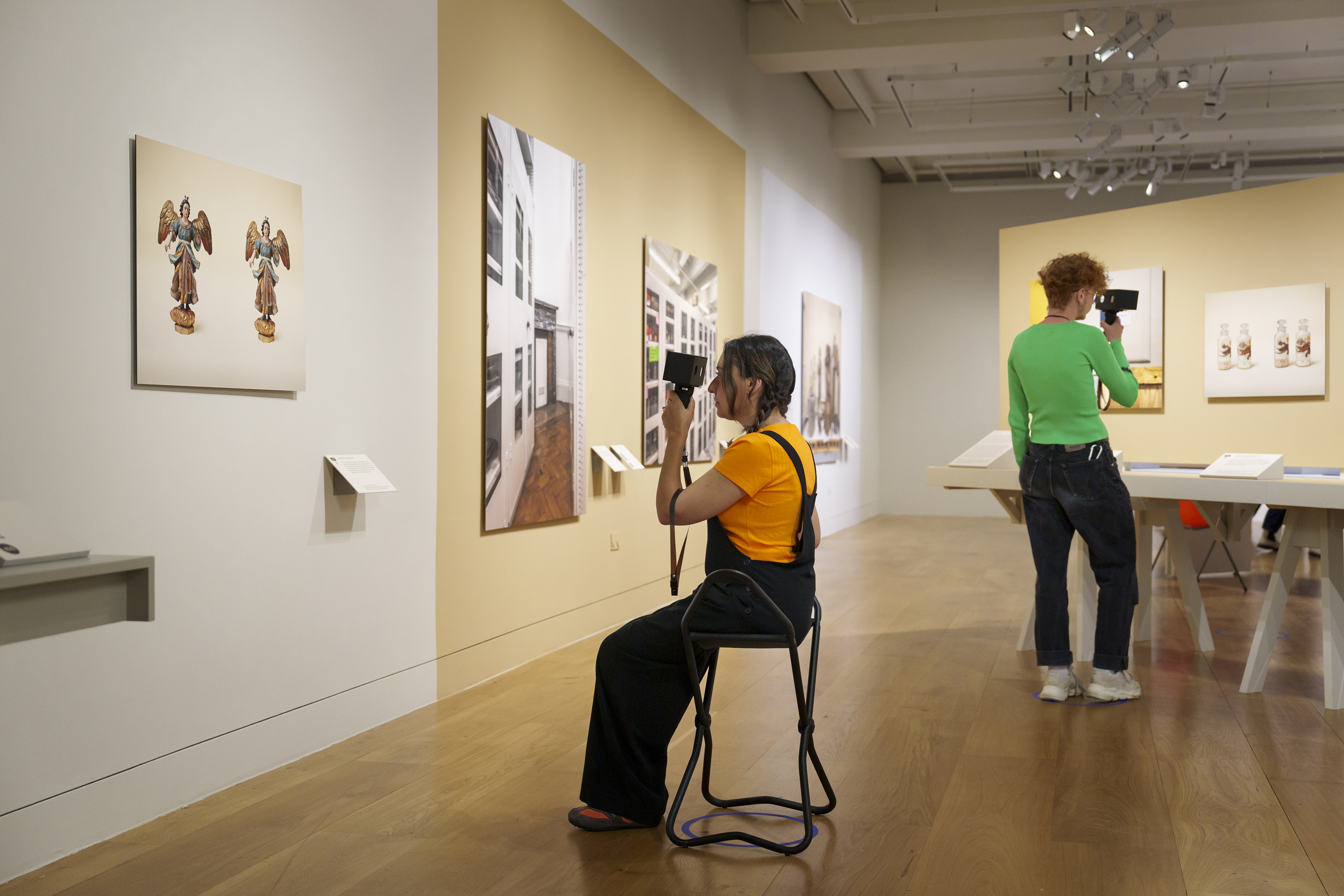


Grace Ndiritu: The Healing Pavilion
and Jim Naughten: Objects in Stereo
Wellcome Collection, London, 2022
and Jim Naughten: Objects in Stereo
Wellcome Collection, London, 2022
This exhibition presented two artists’ commissions, both concerned with ways of looking at what and how museums collect. The Healing Pavilion by British-Kenyan artist Grace Ndiritu radically reimagines what textiles and architecture can do in a museum burdened by colonial history. This work and the accompanying essay are connected to Ndiritu’s ongoing body of work, ‘Healing The Museum’, which she began in 2012. Objects in Stereo is a project by British photographer Jim Naughten, whose work explores museum collections through a combination of stereoscopic and large-scale photography. The exhibition presents new perspectives on the practice of keeping a collection and asks what it means to keep and care for museum objects. 3D design by Plaid, lighting design by Sanford Lighting. Photography ©Wellcome 2022